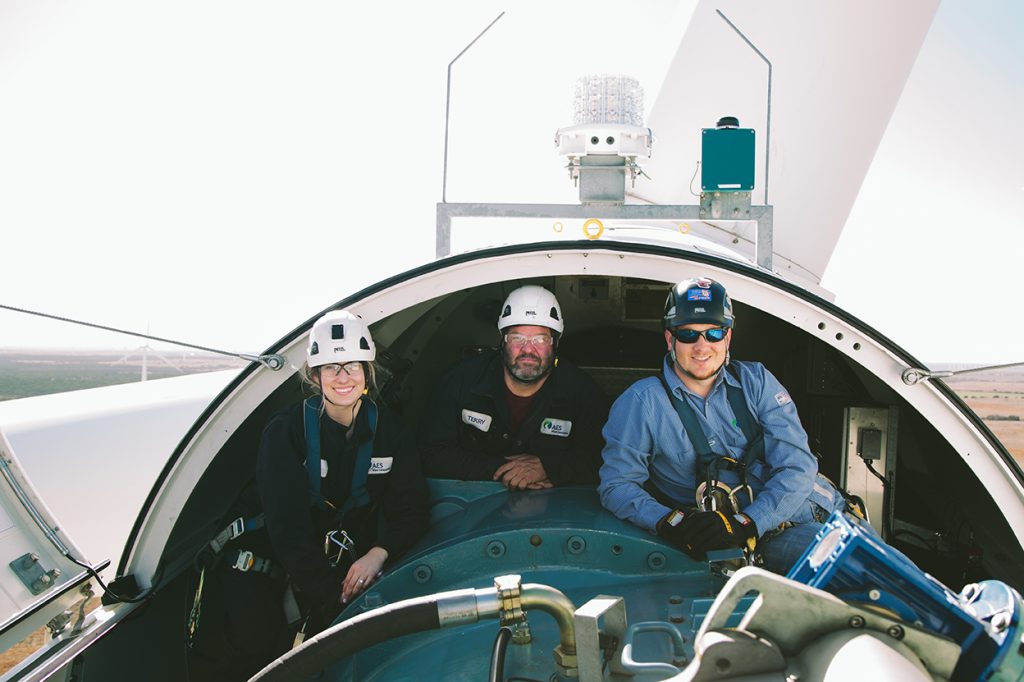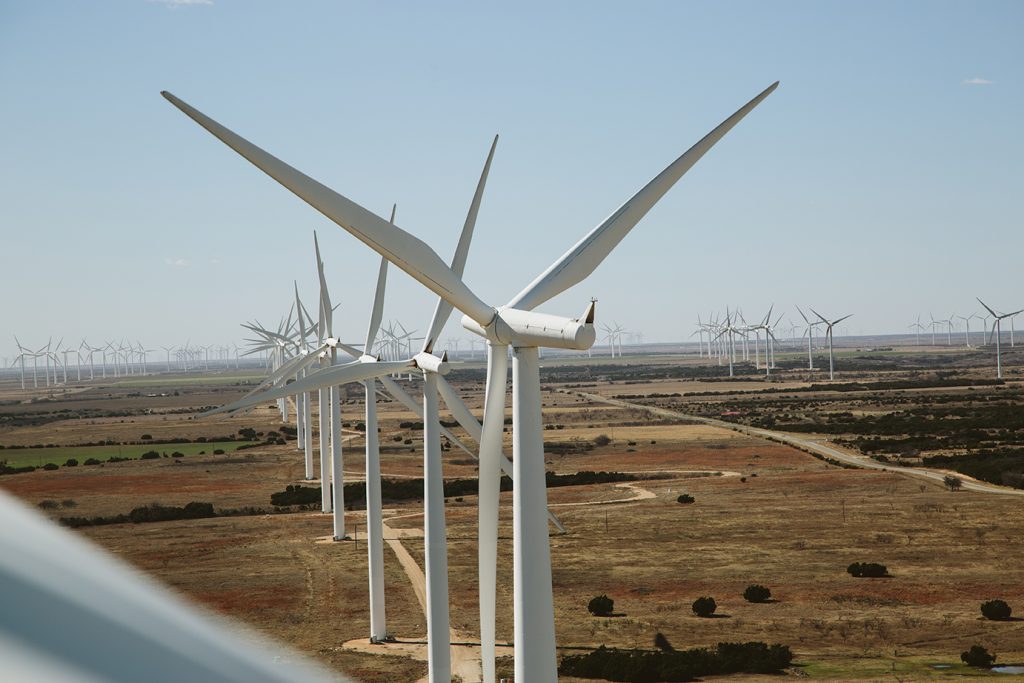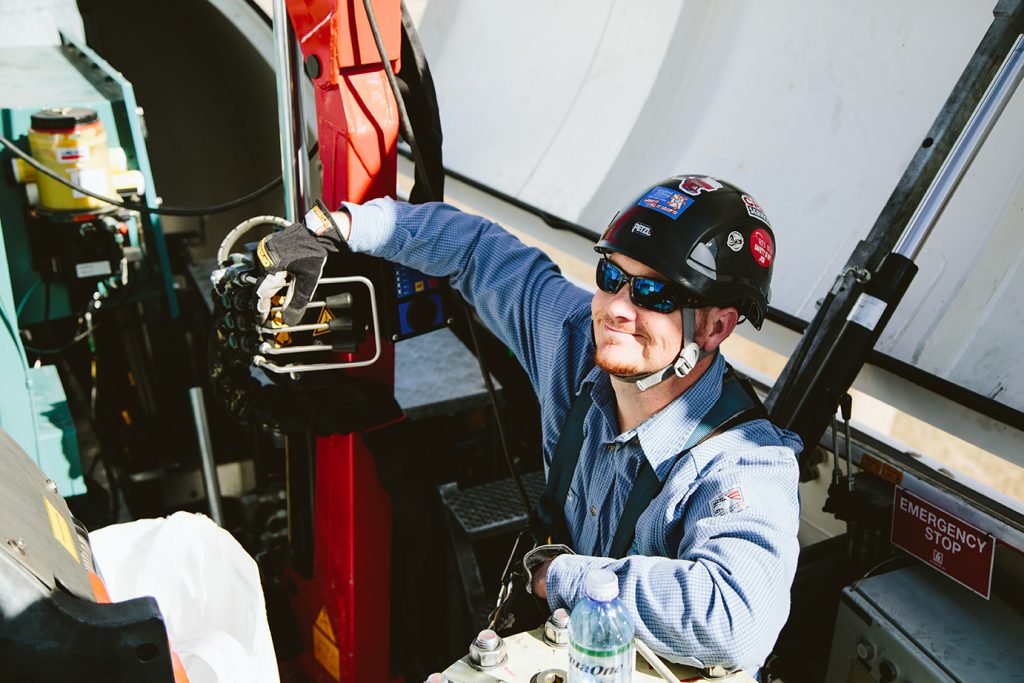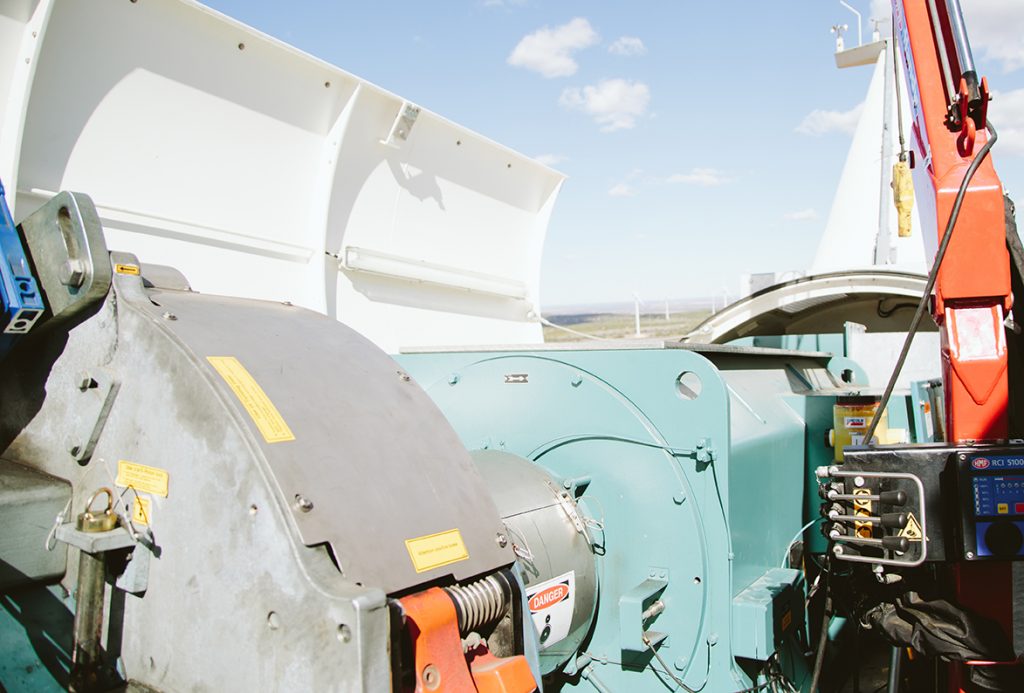By Bailey LeRoux
Photography by Beth Dukes
If you’ve been on a road trip through West Texas, you’re bound to have seen at least one of two important structures: the pump jack and the wind turbine. Both produce energy and both exude a certain mystery for those of us uninvolved in the industry. Fasten on your safety helmets, because we are taking a highly-anticipated look inside a West Texas wind turbine.
You might think you’re prepared for it, but the sheer size of these turbines will still impress you. The typically distant white structures that appear to blow gently in the wind actually measure in at just over 260 feet tall. Each turbine, at peak operation, generates enough electricity to power an average of 2,760 homes every hour. To put that into local perspective, the tallest building in Abilene registers right at 285 feet tall and according to the U. S. Census Bureau there were 47,783 housing units in Abilene in 2015. Needless to say, a trip to the top of one of these gentle giants takes a little more than a quick elevator ride.

On the Ground
Guests are required to attend safety training before climbing. A safety expert will start by asking a series of questions to be sure you are fit for climbing. No recent injuries or surgeries allowed. Waivers are signed and then training begins.
Lesson 1: How to wear your full body harness, boots, helmet, gloves and protective eyewear.
Lesson 2: Use your Fall Arrest Lanyard and always stay connected.
Lesson 3: Take your time and rest when you need to.
Pre-climb jitters are not unusual. Jim Albert, environmental safety and health coordinator for the AES Buffalo Gap facility, says that his relationship with heights isn’t as comfortable as you might think. He would rather climb a turbine than hang Christmas lights on his roof. The difference lies in the equipment.
“Once you know the equipment, once you trust it, then the fear is gone,” Albert said.

Inside the Turbine
The seemingly endless ladder you might imagine does exist inside the Siemens 2.3MW wind turbine, but there are several rest station platforms to break up what might otherwise be quite an intimidating view.
Following a short 8-foot free climb from the base to the first platform, there are three long stretches of ladder before you reach the final platform and the short-assisted climb out of the hatch at the top. Safety lights are there to guide you along the way, and if you are tall enough you can use the wall of the turbine behind you to rest mid-climb.
Aside from the usual West Texas dust, there’s not much particularly dirty about the journey up, but the trip still exudes a certain Mike Rowe quality.

Riding High
After such a long climb, emerging from the white vertical tunnel through a hatch at the top is, literally, a breath of fresh air. The pod at the top of the turbine opens up like the space shuttle to allow for free movement and an incredible airy view of the landscape.
Inside the pod, space is a limited resource. Maintenance technicians and guest climbers navigate a tightly packed collection of mechanisms, motors, gears and generators. Here is where we find the grime. Changing filters, changing oils, cleaning and general mechanical maintenance make up a large part of the dirty daily grind of the wind turbine tech.
According to Tracy Jarvis, general manager at the AES Buffalo Gap Wind, it takes about 4-5 years of hard work through education and on-the-job training to become a senior level technician.
“We hire several guys out of TSTC [Texas State Technical College],” Jarvis said. “They have an associate’s program [where] they learn all the basics and theory behind power generation, hydraulics, mechanics and PIC programming.”
This occupation requires several areas of specialization. Technicians have to be proficient in instrumentation, mechanics and electronics to succeed.

The View
Looking out at the top of the turbines, you can see just how far these fields of turbines stretch. AES Buffalo Gap alone claims responsibility for 296 turbines covering an estimated 15,000-acre area spanning Taylor and Nolan County. But AES isn’t the only player around these parts; other big names include NextEra, EDP Renewables and E.ON.
These wind energy organizations bring big benefits to the area by hiring local employees and contractors, in addition to paying taxes to support local school systems in a market that is more stable than oil. They sign long- term leases with land owners, paying owners a lease fee and a percentage of the revenue generated by the turbines. The land is then still available for the land owners’ use for ranching or farming.
In addition to these local benefits, generating electricity from renewable sources, and producing little to no waste in the process is a benefit for all. In the future, we may continue to see technological developments that increase efficiency and profitability of this West Texas natural resource.

























Leave a Reply